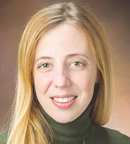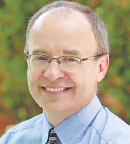As reported in The New England Journal of Medicine by Shannon L. Maude, MD, PhD, of Perelman School of Medicine, University of Pennsylvania, Philadelphia, and colleagues, the phase II ELIANA trial has shown that the anti-CD19 chimeric antigen receptor (CAR) T-cell therapy tisagenlecleucel (Kymriah) produces durable responses in pediatric and young adult patients with CD19-positive relapsed or refractory B-cell acute lymphoblastic leukemia (ALL).1 Findings in the study supported the recent approval of tisagenlecleucel for the treatment of patients up to 25 years old with B-cell precursor ALL that is refractory or in second or later relapse.
Study Details
In the international trial, 75 patients aged 3 to 21 years at diagnosis enrolled at 25 sites between April 2015 and April 2017 received a single tisagenlecleucel infusion at a median weight-adjusted dose of 3.1 × 106 transduced viable T cells/kg (range = 0.2 × 106 to 5.4 × 106 cells/kg) and had a minimum follow-up of 3 months. The median total dose of transduced viable T cells was 1.0 × 108 (range = 0.03 × 108 to 2.6 × 108 cells).

The risks associated with tisagenlecleucel are substantial, leading to ICU-level care in some cases, but were mitigated in most patients with supportive measures and cytokine blockade.— Shannon L. Maude, MD, PhD
Tweet this quote
Patients had to have ≥ 5% lymphoblasts in bone marrow at screening. Those who had received prior anti-CD19 therapy were excluded from the study. The median time from enrollment to infusion was 45 days (range = 30–150 days).
Patients had a median age of 11 years (range = 3–23 years), a median of 3 previous therapies (range = 1–8), and a median marrow blast percentage of 74% (range = 5%–99%), and 46 (61%) had undergone prior allogeneic hematopoietic stem cell transplantation. Lymphodepleting chemotherapy was given to 72 patients (96%) prior to tisagenlecleucel infusion.
The primary endpoint was overall remission rate. Remission was defined as the best overall response of either complete remission or complete remission with incomplete hematologic recovery within 3 months on independent review committee assessment. Responses were required to be maintained for at least 28 days.
Response Rates
The median duration of follow-up was 13.1 months. The overall remission rate within 3 months among the 75 patients was 81% (61 responders; 95% confidence interval [CI] = 71%–89%), including complete remission in 45 patients (60%) and complete remission with incomplete hematologic recovery in 16 (21%).
All patients with a response were negative for minimal residual disease on flow cytometry. The median duration of remission was not reached. Event-free survival and overall survival rates were 73% (95% CI = 60%–82%) and 90% (95% CI = 81%–95%) at 6 months and 50% (95% CI = 35%–64%) and 76% (95% CI = 63%–86%) at 12 months.
CAR T-CELL THERAPY IN B-CELL ALL
- The overall remission rate was 81%, including complete remission in 60% and complete remission with incomplete hematologic recovery
in 21%. - Cytokine-release syndrome occurred in 58 patients (77%), and 35 (47% of all patients) were admitted to the ICU for management.
Among patients for whom data were available, the median time to maximum expansion of tisagenlecleucel was 10 days among patients with a response vs 20 days in those with no response. Expansion measured 315,000 vs 301,000 DNA copies/μg/d. The median duration of persistence of tisagenlecleucel in the blood was 168 days, with a range of 20 to 617 days.
Among patients with a complete remission, 17 had disease relapse before receiving additional therapy. Relapse also occurred in 3 patients who received subsequent therapy for the emergence of minimal residual disease or loss of tisagenlecleucel persistence and in 2 patients with a remission that did not persist for ≥ 28 days. No central nervous system (CNS) relapses were observed during primary follow-up, with one patient having CNS relapse during subsequent treatment. Of 16 patients with relapse whose CD19 status was known at the time of relapse, 1 had a CD19-positive recurrence.
Adverse Events
Grade 3 or 4 adverse events occurred in 88% of patients, including 83% within 8 weeks of infusion and 44% between 8 weeks and 1 year. These adverse events were suspected to be related to tisagenlecleucel in 73%, 69%, and 17%, respectively.
The most common nonhematologic adverse events of any grade at any time after infusion were cytokine-release syndrome (77%), pyrexia (40%), decreased appetite (39%), febrile neutropenia (36%), and headache (36%). The median time to onset of cytokine-release syndrome was 3 days (range = 1–22 days), and the median duration was 8 days (range = 1–36 days). Grade 3 or 4 cytokine-release syndrome occurred in 45% of patients, with a total of 35 patients (47% of the total population, 60% of those with cytokine-release syndrome) being admitted to the intensive care unit (ICU) for management. The median ICU stay was 7 days. Tocilizumab (Actemra) treatment was used in 48% of patients with cytokine-release syndrome.

Michael A. Pulsipher, MD

Stephan A. Grupp, MD, PhD
Neurologic adverse events occurred in 40% of patients within 8 weeks, with the most common being encephalopathy (11%), and were of grade 3 in 13% of all patients; no cases of cerebral edema were observed. Most neurologic adverse events occurred during or shortly after resolution of cytokine-release syndrome.
The investigators concluded: “[T]isagenlecleucel produced high remission rates and durable remissions without additional therapy in high-risk pediatric and young adult patients with relapsed or refractory B-cell ALL. The risks associated with tisagenlecleucel are substantial, leading to ICU-level care in some cases, but were mitigated in most patients with supportive measures and cytokine blockade.”
Senior authors Michael A. Pulsipher, MD, of the University of Southern California Keck School of Medicine, Los Angeles, and Stephan A. Grupp, MD, PhD, of the Perelman School of Medicine, contributed equally to TheNew England Journal of Medicine article. ■
DISCLOSURE: The study was funded by Novartis Pharmaceuticals. For full disclosures of the study authors, visit nejm.org.
REFERENCE
1. Maude SL, Laetsch TW, Buechner J, et al: Tisagenlecleucel in children and young adults with B-cell lymphoblastic leukemia. N Engl J Med 378:439-448, 2018.

